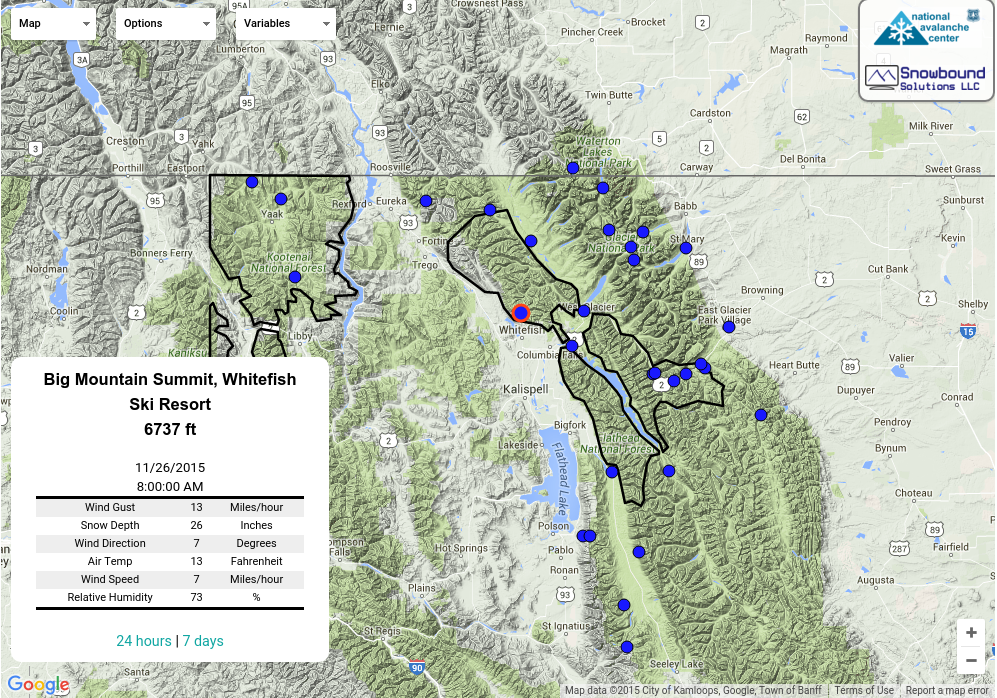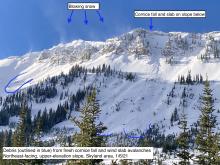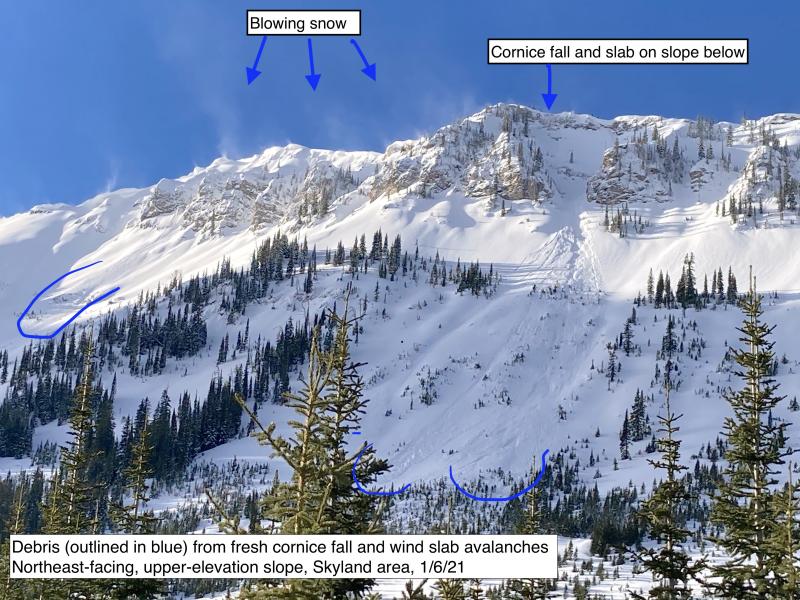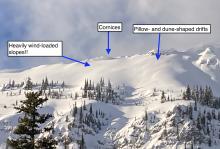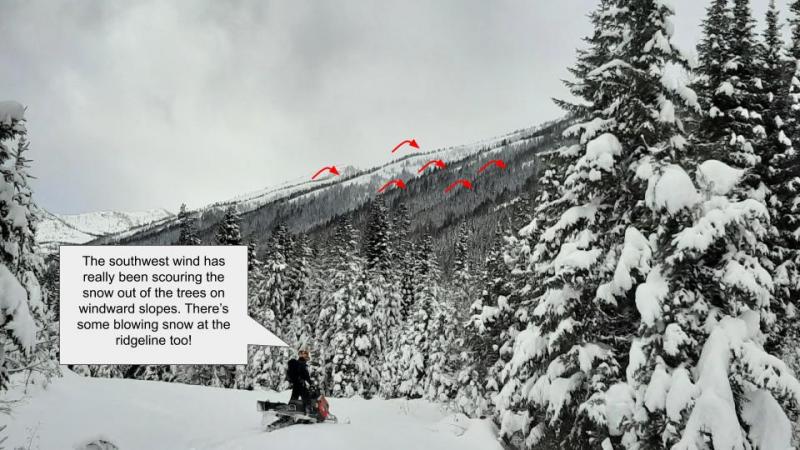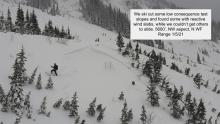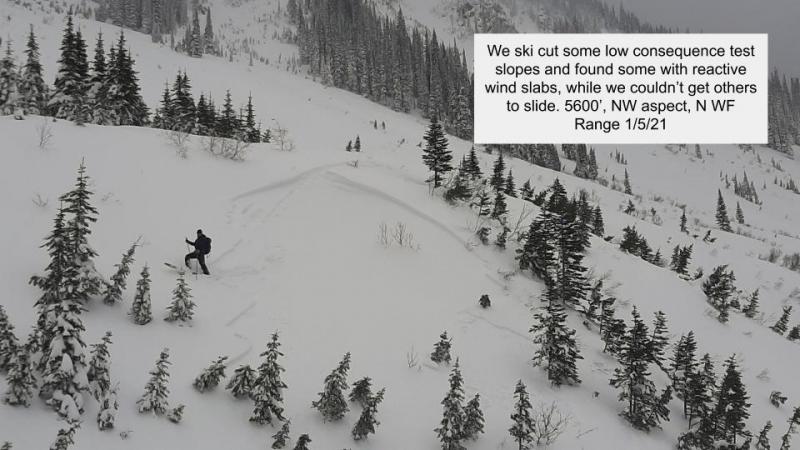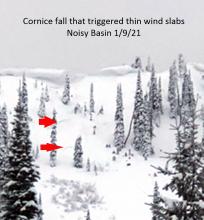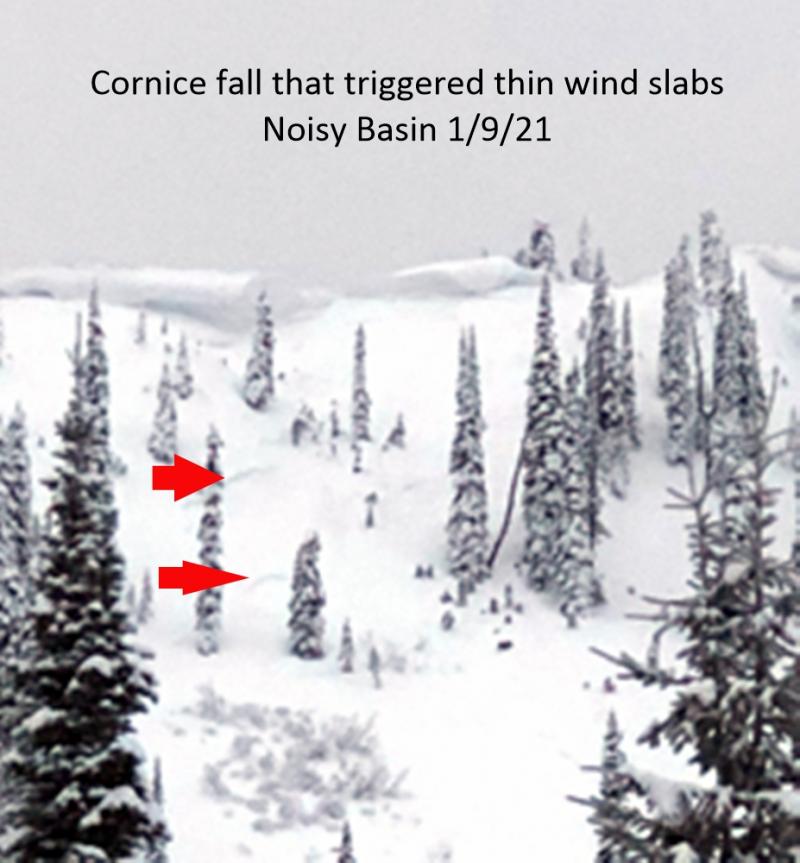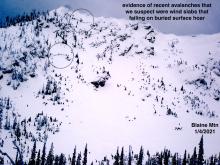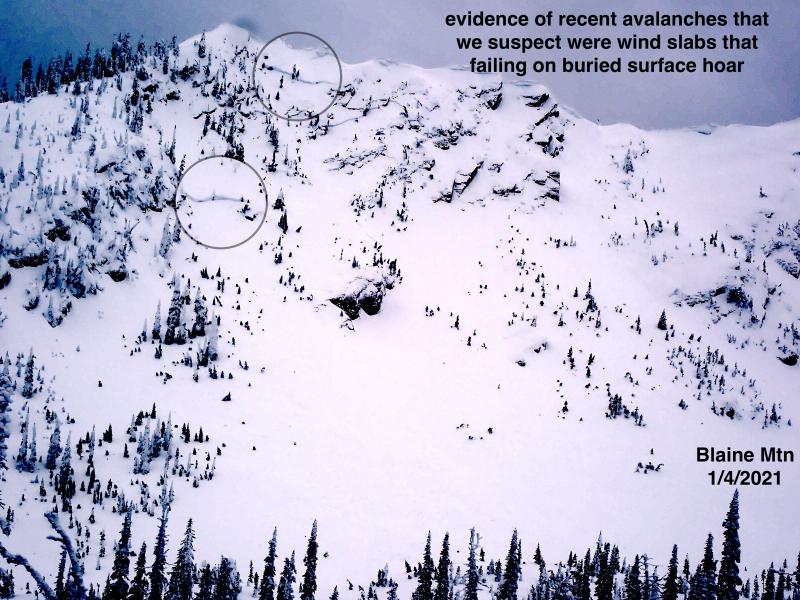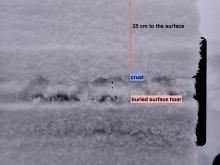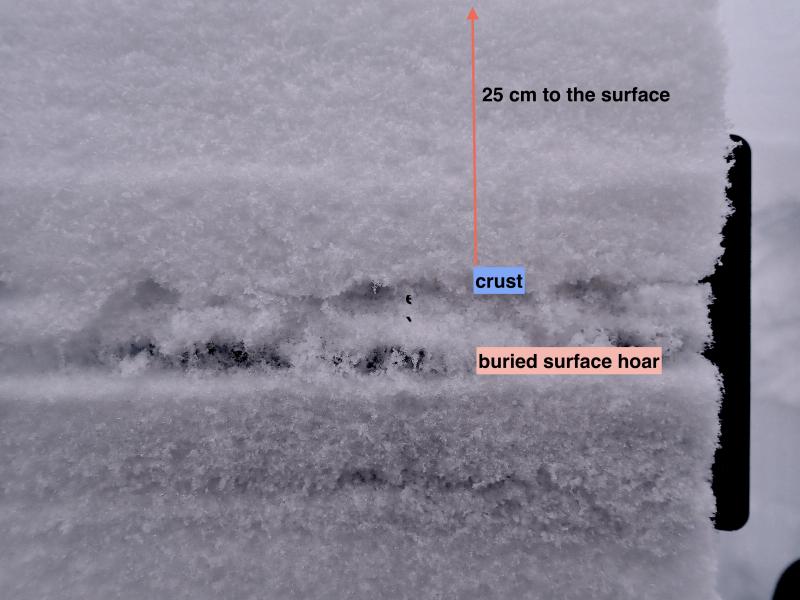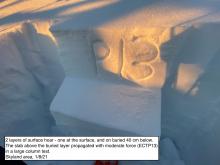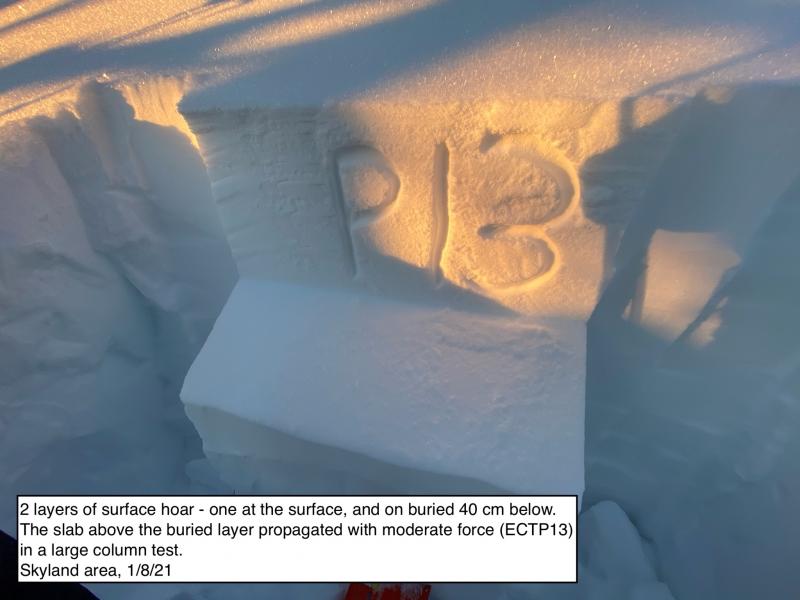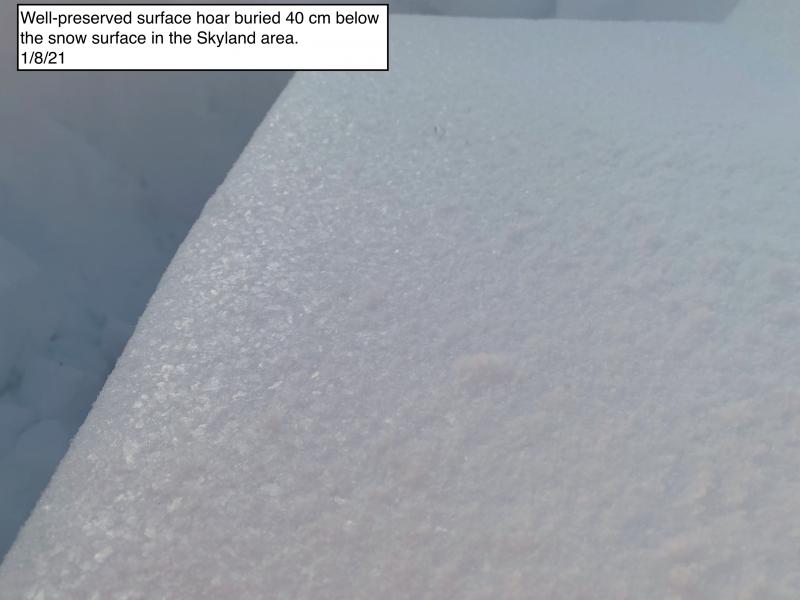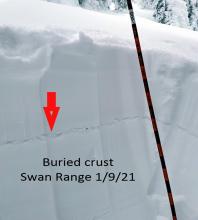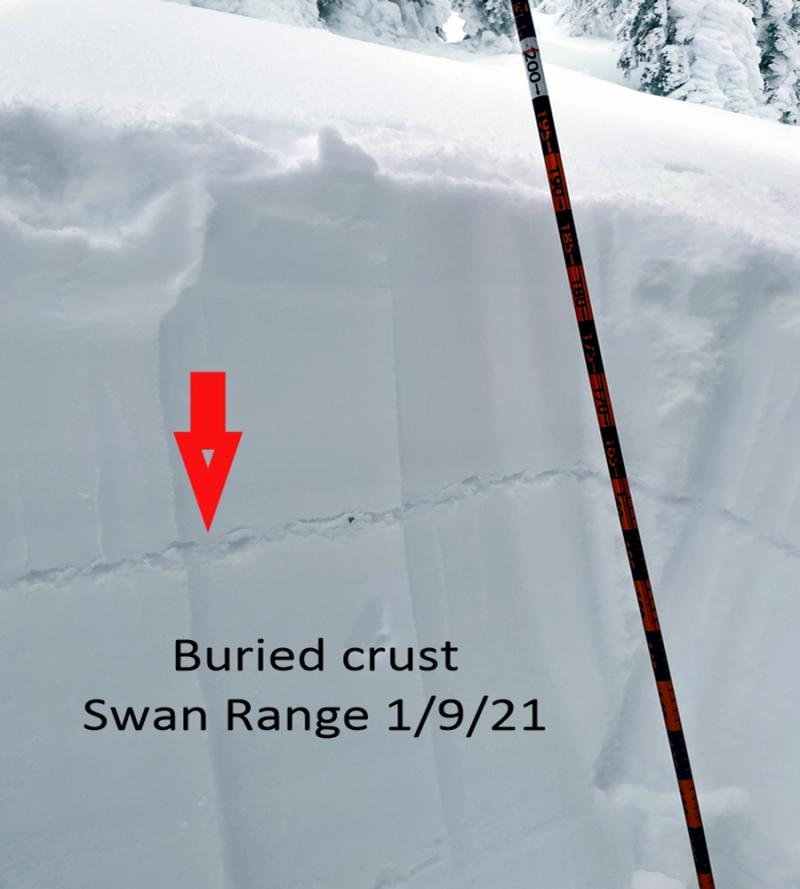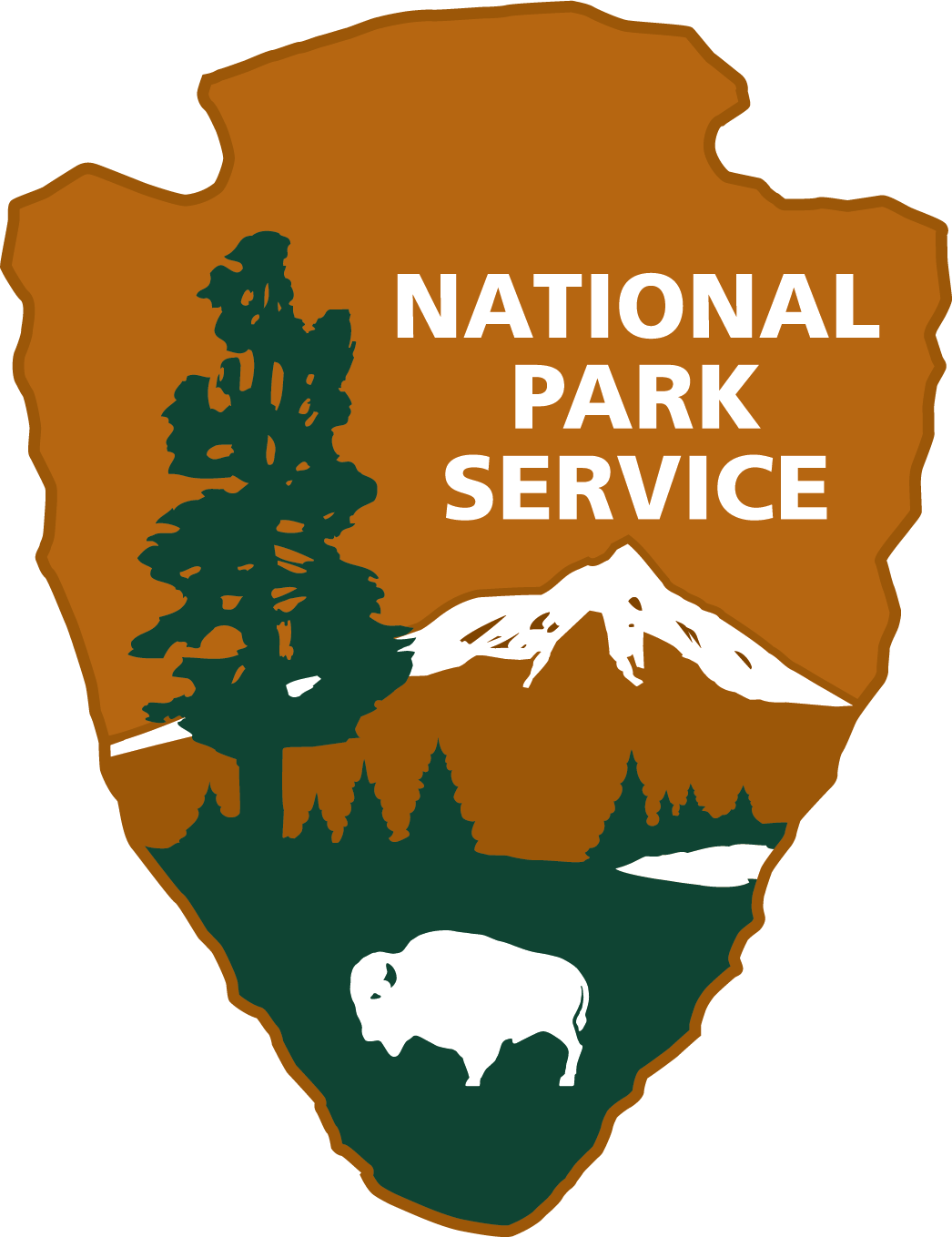| Sunday | Sunday Night | Monday | |
|---|---|---|---|
| Cloud Cover: | Partly cloudy. | Partly cloudy. | Mostly cloudy with moisture entering late. |
| Temperatures: | 30-40 deg. F. | 15-24 deg. F. | 27-36 deg. F. |
| Wind Direction: | west-southwest | southwest | west-southwest |
| Wind Speed: | 9-12 mph with gusts to 29 | 10-16 mph with gusts to 39 | 6-11 mph with gusts to 25 |
| Snowfall: | 0 in. | 0 in. | 0 in. |
| Snow Line: |
Whitefish Range
Swan Range
Flathead Range and Glacier National Park
How to read the forecast
The avalanche danger is MODERATE above 6000 feet. Recent winds have developed fresh wind slabs while continued windy conditions today will thicken existing slabs and create new slabs. In some locations these slabs are being deposited on top of a rain crust. Evaluate all wind loaded terrain before committing to it. Despite recent warm weather, weak layers continue to exist and be a concern in our snowpack. Choose conservative terrain in areas where you find a weak snowpack structure.
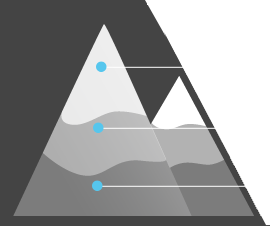
2. Moderate
?
Above 6500 ft.
1. Low
?
5000-6500 ft.
1. Low
?
3500-5000 ft.
- 1. Low
- 2. Moderate
- 3. Considerable
- 4. High
- 5. Extreme
-
Type ?
-
Aspect/Elevation ?

-
Likelihood ?CertainVery LikelyLikelyPossible
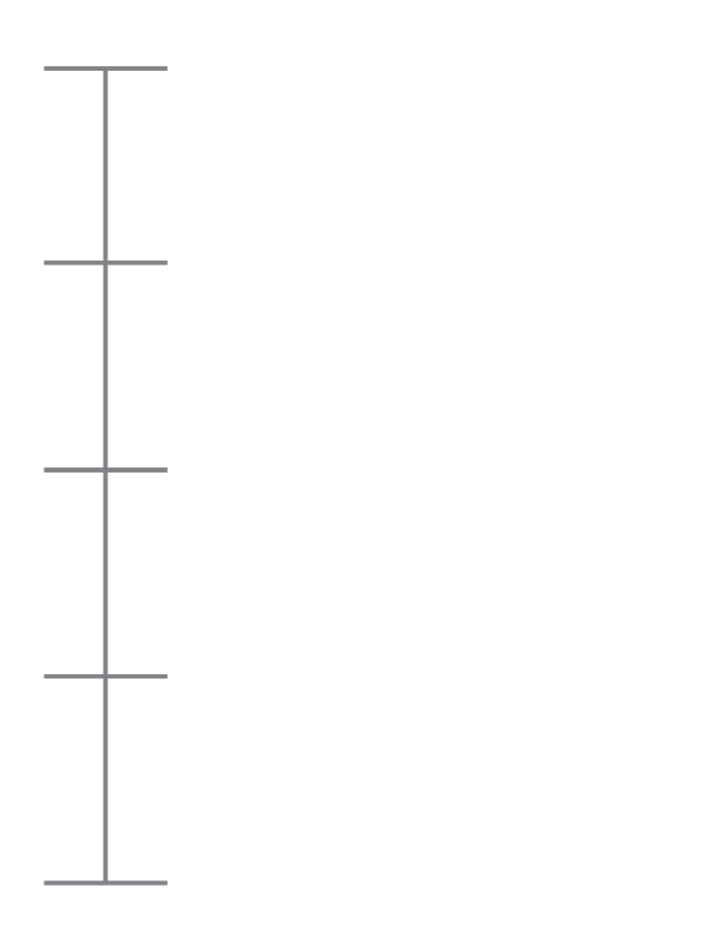 Unlikely
Unlikely -
Size ?HistoricVery LargeLargeSmall

Over the past week calm to light winds and cool temperatures have preserved our limited low density surface snow. Unfortunately, that scenario has changed as wind speeds have increased over the past 48 hours creating fresh wind slabs in upper elevation locations. Observations from Saturday confirm that this problem was found in multiple locations. Wind speeds increased overnight which has helped to develop and thicken slabs with breezy conditions today only adding to the problem. In some locations these slabs have been deposited on a rain crust which will make for a great sliding surface. Be alert for obvious signs of fresh wind slab development such as cracking in the surface snow and smooth rounded pillows on the surface. Evaluate all wind loaded terrain before recreating on it.
-
Type ?
-
Aspect/Elevation ?
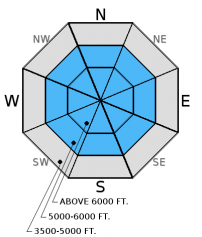
-
Likelihood ?CertainVery LikelyLikelyPossible
 Unlikely
Unlikely -
Size ?HistoricVery LargeLargeSmall

Weak layers formed throughout this season can still be found in our snowpack and remain a concern. Recent warm weather is slowly strengthening these layers but we are still a long ways from writing these problems off. The only way to identify these layers is to dig into the snow and look for them. Where these layers are found conservative decision making is the solution. Avoid areas that are steep and rocky and/or have a shallow snowpack.
Today, temperatures are expected to rise above freezing in most mountain locations which could trigger loose snow avalanches. In favored locations up to 10" of recent low density snow has been deposited on top of a rain crust. Loose snow sliding on a smooth crust can pick up a good head of steam and be particularly consequential if traveling near terrain traps like cliffs, trees, and narrow gullies.
Saturday: Riders in the northern Swan Range felt a whumpf or collapse in the snowpack. They also noted surface snow sliding on the underlying hard layer along with minor cracking. Skiers in the southern Whitefish Range noted active wind transport of the surface low density snow. Skiers in Rescue Creek in the Flathead Range found fresh wind slabs with wind loaded ridges and breakable crust below 6200'. Skiers in the Missions, out of our forecast area, noted windy conditions in the upper elevations with southerly slopes heating up producing rollerballs and small point releases.
Friday: Guy and Mark traveled to the Red Meadow area of the northern Whitefish Range where they found the Jan 19 rain crust below 5600'. Above that elevation the rain crust was replaced by a 3" thick dense slab of snow that rested on an obvious thin layer of facets. During our ascent and descent this slab broke easily on the facets but did not propagate.
Thursday: Skiers were in the Marion Lake/ Dickey Ridge area in the Flathead Range. Above 6000 feet they found 8-9 inches of recent snow atop the supportable Jan. 19 crust. They did not observe any recent avalanche activity or obvious signs of instability.
See below for all observations this season.
High pressure is parked over our area but moisture will move through producing partly cloudy conditions. Above 6000 feet temperatures currently range from 19-32ºF, and winds are out of the southwest at 5-23 mph with gusts from 22-32 mph. Today should bring partly cloudy skies and temperatures in the low 30s to upper 30s. Winds will continue out of the west-southwest at 10-15 mph with gusts in the 30s.
| 0600 temperature: | 19-32 deg. F. |
| Max. temperature in the last 24 hours: | 23-33 deg. F. |
| Average wind direction during the last 24 hours: | southwest |
| Average wind speed during the last 24 hours: | 5-23 mph |
| Maximum wind gust in the last 24 hours: | 22-32 mph |
| New snowfall in the last 24 hours: | 0 inches |
| Total snow depth: | 53-70 inches |
This advisory applies only to backcountry areas outside established ski area boundaries. This advisory describes general avalanche conditions and local variations always occur. This advisory expires at midnight on the posted day unless otherwise noted. The information in this advisory is provided by the USDA Forest Service who is solely responsible for its content.

